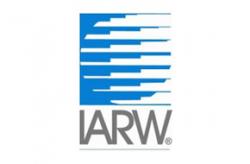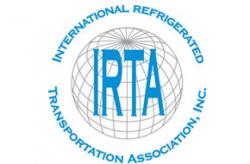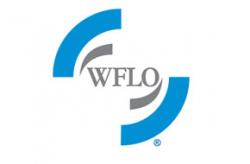Driver Shortages Still Problematic
Companies find innovative solutions to recruiting and training.
The trucking industry already faced human resource issues prior to COVID-19. A shortage of drivers was the big one with industry experts estimating a shortfall of between 50,000 and 90,000 drivers.
With the pandemic, Travis McCain, Vice President of Sales, FFE Transportation, sees the current situation as “about as rough as it’s ever been.” Jeff Jackson, Senior Vice President Operations – Dedicated Contract Carriage, Penske Logistics, attributes the surge in demand to the growth of e-commerce and other supply chain disruptions. Compounding the problem, the majority of truck drivers are above 50 years old. “The worries of being away from home or being exposed to the pandemic drove many to retire from the profession altogether,” says McCain. At the start of the pandemic, some companies had problems recruiting over uncertainty regarding the virus and overall concerns for health and safety. “Along with that, our driver positions require some overnights, and with lifestyle changes caused by the pandemic, drivers needed to be home daily to help with their family situations,” comments Michele Burke, Regional Transportation Recruiter at KeHE.
Another factor impacting recruitment: the pandemic has caused drivers to be less likely to change jobs, making it harder for firms to recruit from other companies. All is not bleak, however. Jackson says, “Because our drivers are more hesitant to leave, coupled with our associate engagement efforts, we have seen a 15% improvement in our turnover numbers.” Lee Neal, Vice President of Business Development for Great Plains Transport, comments that his company is not seeing any driver shortages at all. “We actually have drivers on a waiting list when a truck becomes available,” he says. Burke reports the company has not been short on drivers based on its applicant flow, but there has been a shortage of safetyminded drivers. “Many drivers do not qualify due to their driving history, which makes them uninsurable and not a good fit for KeHE Distributors,” she says.
Training and Recruitment
Companies are working around the challenges with innovative solutions. Penske Logistics, for example, implemented comprehensive associate engagement plan across all its locations that focuses on communications, as well as reward and recognition. The company also launched a military apprentice program to bring in those that are transitioning out of the armed forces. “We continuously do wage surveys to ensure our compensation and benefits packages are competitive,” Jackson says. In addition, the company launched a centralized driver hiring center (DHC) at corporate headquarters last year. The DHC handles all administrative functions in the hiring process such as advertising, interviews, background checks and drug screening. The only responsibility field leaders have is to execute the final road test, making it possible for the field leaders to focus their energies on customers and associate engagement. “As a result of the DHC, we have also improved the onboarding experience and shortened our cycle time to hire by 15 days,” Jackson adds. “The company also employs a data science team that has developed, and is in the process of expanding, a nationwide pilot.
Predictive analytics provide our field leaders with visibility to determine which drivers are most likely to leave and they engage those drivers, work towards understanding their concerns, and often make changes to mitigate the turnover.” Jackson says training ranks as a top priority at the company and much of the classroom training is now done virtually and digitally. He points out, however, that the most valuable training is a ride-along with an experienced driver. Jackson also emphasizes that Penske Logistics earned its GCCA Cold Carrier Certification in 2020, which allows the company to provide additional training to its drivers so that they can safely handle refrigerated food and beverage items, “This certification underscores our commitment and provides our customers with an added layer of confidence and documentation that we are doing our utmost to ensure the safety and sanitation of their perishables shipments,” Jackson says. FFE Transportation provides a unique driver recruiting and training process and has taken steps to increase driver income. “By reaching out to those who do not already hold a commercial driver’s license (CDL), we offer the opportunity for free training and a professional driving position with one of the larger fleets in the industry,” McCain says. “We offer some of the newest equipment and fixed schedules for drivers looking to be home nightly or weekly, with minimal disruptions.”
McCain reports that in addition to providing its linehaul fleet with a 25% increase in pay in January 2020, the company has an on-site driver academy at three of its corporate offices. The facilities include housing for incoming training classes, computer labs, training rooms, physician offices, cafeterias and driving ranges. “Through the curriculum set at our driver academies, and in partnership with local community colleges, we take great pride in providing a mix of classroom experience as well as simulation and hands-on training,” McCain says. “The preferred applicant that we target has a background in food distribution and operation of refrigerated trailers,” says Greg Sikorski, Senior Director of Transportation Safety & Compliance, KeHE. “Therefore, the majority of drivers are already familiar with these requirements for the position.” The company’s transparency in recruiting efforts, Burke says, is key to KeHE’s success.
“We inform and educate potential drivers on all the difficulties that are associated with the food delivery business,” she says. “Our driver candidates find our direct and candid communication refreshing. This is also crucial in retaining our drivers.” To ensure all drivers are well prepared to manage their designated load, KeHE pairs newly hired drivers with a driver trainer. “We also prescribe online training sessions to all new drivers and the training recurs annually for all drivers,” say Sikorski. He says the company offers competitive pay, consistent work and health benefits on a driver’s first day, as well as an opportunity to be an owner in the company through an Employee Stock Option Plan. “KeHE also offers some incentives to accommodate the wait time between the driver’s first day of work and their first paycheck,” Burke adds. “Our motto is: We hire to retire.” Great Plains Transport succeeds in its hiring and retention efforts by offering drivers an annual salary instead of the traditional per mile pay, Neal says. “This gives them the same pay week in and week out. We also offer paid time off based on the same criteria as all employees, plus our insurance and matching 401K."
Neal notes the company also provides drivers the opportunity to make additional monthly bonuses up to $800 per month if they qualify. “We treat our drivers with respect and utilize driver-friendly customers. We concentrate on shippers that value drivers – where drivers are loaded/unloaded, in and out with no detention, flexible appointment times, truck parking and driver waiting areas."
KAREN E. THUERMER is a freelance writer based in Alexandria, Virginia, who specializes in economic and logistics issues.
Source: Cold Facts Mar/Apr 2021 issue



